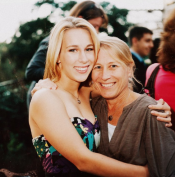Markster; I didn't mean anything personal. Sorry. More likely, I hope I could be of some help.
I'm sorry, but your test shows some VERY peculiar problem I've never seen with Ektar. It certainly isn't normal for Ektar, or any color neg film for years. I haven't seen it by myself, and I haven't seen it in another examples. For example, see the examples with car, color patches and step wedge that have been linked somewhere here. They went up to +5 stops and differ very much from your results. They start showing some shouldering or washing out at +5 stops, not at +2 stops, but still nothing serious.
I still suspect something in your workflow.
BTW, that is usually called "washed out" look. In fact, all of your scans of the hand grenade scene look somewhat washed out and the colors are odd. I've seen this when using severely expired film or faulty developer. But due to complexity of the scanning process, it may be the cause as well, even with perfect negatives! I have seen that as well. It may simply be something with level adjustments, but this is something to be discussed at DPUG.
Generally I found with Coolscan V that Nikon Scan did usually better with color negs than VueScan. Actually, you are talking about "scanner calibration" with one frame. This is already where you may go wrong. I don't know what you mean by "scanner calibration", but if it is the black point, or Dmin calibration, it's the same as settling with one exposure time in optical printing - a completely wrong action if you have frames exposed differently. You HAVE to adjust for every frame unless they are close in lighting and exposure.
As for Pentaxforum example, some color crossover can be seen. This looks like a problem in digital image processing. The author of the test claims he has "adjusted exposure for equivalent values of white highlights", which clearly wasn't successful, because highlights go from blue to white to green. So, judging the results, the "adjustment" has gone somehow wrong, and thus we cannot know what the initial state was, since the adjustments may have messed up anything or everything! Then just imagine that these kind of adjustments are also done automatically, hidden from user.
Now, I hope this also shows the benefits of optical printing. No hidden state in software, no hidden "calibration", no hidden levels, no hidden curves, no hidden auto exposure, no hidden auto focus. No "color balancing" tools that would simultaneously do something else than just affect color balancing. For example, AFAIK, even today, Adobe Photoshop curves and levels tool mess up color integrity (causing color crossover) because of misunderstanding of gamma correction by the programmer. In fact, I haven't found one single tool in Adobe Photoshop that could be used to adjust color balance, like Magenta/Yellow knobs in enlarger when you print optically!
But when you print optically, you have: fixed contrast (designed to look "good"), fixed curves (designed to look "good"), adjustments for "brightness" (exposure time) to adjust for differently exposed negs, magenta & yellow knobs to get any color balance you want, but no other color adjustments - you can only adjust color BALANCE, but you cannot mess up color purity or cause crossover. Then, these may sound like restrictions, as they are, but in fact you can do 99% of your images even with these restrictions just perfectly. Then, there are many tricks you CAN use if you need to to overcome these restrictions; you can control contrast if you WANT to, but you don't do it accidentally like in scanning. Dodge, burn, preflash, ferricyanide (SLIMT), sulfite, H2O2, pH, dev time, bleach bypass, partial BW dev, etc.
It seems to me that there are people who can easily scan and get easily very good results. I'm a bit jealous of them

. I can get good results in scanning too, but I find it tedious. Then there are people who cannot get good results from scanning at all.
But I have yet to see anyone who cannot get good results from optical printing!








 . I can get good results in scanning too, but I find it tedious. Then there are people who cannot get good results from scanning at all.
. I can get good results in scanning too, but I find it tedious. Then there are people who cannot get good results from scanning at all. 



 .
.
